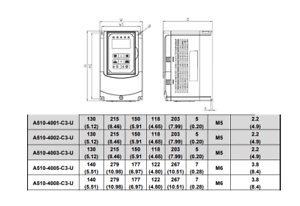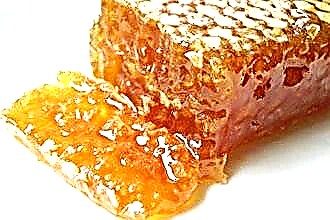How nutrition affects heart rate
Heart rate is influenced not only by the level of activity, mental or emotional state, medications taken, but also by diet. Nutrition for tachycardia should be complete and contain enough elements important for the heart.
With a lack of iron in the diet, heart palpitations may develop. The element is part of hemoglobin, helps red blood cells to carry oxygen. With its deficit, the transport of a sufficient amount of gas is not provided to meet the needs of organs and tissues. As a result of anemia, tachycardia, weakness, fatigue and shortness of breath appear.
Although iron is deposited in the human bone marrow "in reserve", it should be included in the diet. Women in menopause, however, like men, are recommended to consume 8 mg daily. For women in a state of premenopause, due to the regular loss of iron during menstruation, the dose is increased to 18 mg per day.
Lack of vitamins B-12 or B-9 (folic acid) in the diet can also cause heart palpitations. The first helps cells produce succinyl-CoA, a coenzyme used to make hemoglobin. B-9 promotes continuous cell growth, which is essential for the production of new red blood cells. Deficiency of these vitamins can cause pernicious anemia. It is characterized by increased heart rate, weight loss, irritability, and fatigue.A healthy person's daily diet should include 2.4 mcg of vitamin B-12 and 400 mcg of B-9.
Adequate potassium and magnesium levels help prevent a rapid heart rate. These elements play an important role in the transmission of nerve impulses along the conduction system of the heart, which maintains the correct sinus rhythm. Their deficiency increases the risk of paroxysmal supraventricular tachycardia. With such an arrhythmia, the heart rate increases to a critically high level (200 or more per minute).The need for potassium is 420 or 320 mg per day for men and women, respectively..
Doctor's advice
If you notice a rapid heartbeat, see your doctor. Tachycardia can be caused by serious medical conditions, including heart failure and painless myocardial infarction. It is important to find out whether it is a physiological or pathological process. Taking nutritional supplements alone can cause tachyarrhythmias. And the additional use of iron without indications leads to side effects from the nervous system and liver.
What foods cause tachycardia
Each element of food consists of a specific set of molecules, which in one way or another contact with receptors, causing a specific effect. It is not surprising that some substances provoke a slowdown in the pulse, while others - its increase.
Caffeine stimulates the central nervous system, which can lead to an increase in heart rate. If you have hypertension, arrhythmias, or rapid heartbeat, you should limit your intake. The substance is found in coffee, black or green tea, some carbonated and energy drinks, and chocolate.
Guarana - this is how the base plant looks for many energy drinks.
Theobromine is another stimulant of the nervous system, it is found in chocolate, as well as in flavorings that are added to ice cream, cakes, sweets, hot chocolate. According to an article published in July 2013 in the journal Psychopharmacology, theobromine increases heart rate in proportion to dose. That is, the more its amount enters the body, the more the heart rate increases. If your heart rate is elevated, avoid or limit your consumption of chocolate.
Eating foods that cause your blood sugar to spike can also cause your heart to palpitate. Hyperglycemia interferes with the normal functioning of blood vessels, causes an increase in heart rate and an increase in blood pressure.
Sugar drinks, candy, desserts, snacks, breads, pasta and white rice are all high glycemic index foods. They should be included in the diet in small quantities. Prefer whole grains and whole grains: brown rice, whole wheat bread. They contain more complex carbohydrates and less simple sugars.
Diet with frequent heart rate
Many foods have a beneficial effect on heart rate. For example, hot cayenne pepper can prevent ventricular arrhythmias. When this condition occurs, you will feel that the heart is beating too fast or, conversely, slowly.
Heartbeat failure does not always cause problems, but sometimes it can lead to decreased blood flow to the brain and other organs.Capsaicin, which is found in hot peppers, helps to improve blood circulation and reduce heart rate.
Stimulants are often the cause of tachycardia. To reduce the frequency of seizures, include only soft drinks in your diet. Even some teas labeled as decaffeinated may contain residues of this substance.
DASH diet
The acronym translates as "dietary approaches to ending hypertension." This diet may also work for patients with tachycardia, as high blood pressure leads to an abnormally fast heartbeat. Eating fruits, vegetables, low-fat dairy products, protein, and whole grains is recommended. By maintaining blood pressure at a normal level with such nutrition, you can reduce the likelihood of developing cardiac disorders, stroke.
The diet for patients with tachycardia involves a low sodium intake. The National Institute of Heart and Lung Disease recommends limiting the intake of this trace mineral to reduce hypertension to 1,500-2,300 mg per day. To keep sodium levels low in your diet, use spices instead of salt. Rinse canned vegetables with water before serving, and cut back on processed foods - for example, cook meat and skip sausage.
The body reacts to the consumption of sugar, especially on an empty stomach and in large quantities, with an increased production of pancreatic enzymes, insulin and adrenaline. As a result of the release of hormones into the blood, the heart begins to beat faster. It may not be necessary to give up sugar altogether. The optimal solution is to add it to the diet in moderation, avoiding sudden jumps.
Menu for the week
Healthy heart food made easy. Do you want to eat healthy but don't know where to start? One way is to create a daily meal plan.
Day 1
Morning:
- Oatmeal from half a glass of cereal, with tbsp. chopped walnuts and cinnamon;
- medium banana;
- 1 tbsp. milk b / w.
Afternoon snack:
- 1 tbsp. low-fat (≤1%) plain yogurt + 1 tsp ground flax seeds;
- 100 g of canned peaches per s / s;
- 5 Melba toast crackers;
- 200 g raw cabbage - broccoli and / or cauliflower;
- 2 tbsp. low-fat soft cheese;
- purified water.
Dinner:
- 100 g of red fish;
- 1/2 tbsp. beans in pods + tbsp. almond petals;
- 400 g lettuce leaves + other greens;
- 2 tbsp. low-fat salad dressing;
- 25 g sunflower seeds;
- 250 ml of b / w milk;
- orange up to 150 g.
Evening:
- 250 ml of b / w milk;
- 120 g crackers;
Bottom line: calories 1562, fat 45 g, of which cholesterol - 126 mg,
carbohydrates of all types 207 g, fiber 24 g, protein 92 g, sodium 1.257 mg.
Day 2
Morning:
- 250 ml plain yogurt with ≤1% fat and 150 g blueberries;
- 200 ml of orange juice fortified with calcium.
Afternoon snack:
- 100 g of bread with whole grains and tomatoes, 50 g of cucumbers, 2 tbsp. chopped feta with st. ranch sauce b / w;
- 85 g kiwi;
- 250 ml of non-ferrous milk.
Day:
- fried chicken (100 g) with 200 g of eggplant, basil;
- 200 g of brown rice, with 25 g of dried apricots;
- 200 g steamed broccoli;
- 100 g of juice from grapes, you can have the same amount of wine (red).
Dinner:
- 2 tbsp.nuts without salt;
- 250 ml b / w frozen yogurt.
Bottom line: calories 1605, fat 30 g, of which cholesterol 126 mg,
carbohydrates 242 g, fiber 24 g, protein 83 g, sodium 1.264 mg.
The third day
Morning:
- 200 g avocado;
- boiled egg;
- 150 g blueberries.
Snack:
Orange 250 mg.
Day:
Chickpeas with vegetables:
- 300 g of a mixture of herbs;
- 150 g of vegetables (cucumbers, peppers, tomatoes);
- 140 g washed chickpeas;
- 20 g red wine vinegar, 10 g olive oil, ground seasoning to taste.
Dinner:
- 100 g grilled salmon with green pepper sauce;
- 200 g steamed beans in pods;
- 200 g of baked red potatoes, seasoned with 8 g of olive oil, a little salt and pepper.
Bottom line: 1181 calories, 144 g carbohydrates, 27 g fiber, 44 g fat, of which 12 g saturated, 62 g protein, 1.208 mg sodium.
Day 4
Morning:
- 200 g of cereal bran;
- 1 tbsp. b / w milk;
- 100 g blueberries.
Snack:
- 230 g slices of fresh red pepper;
- apple about 180 g.
Day:
A portion of soup made from products of your choice (cabbage, carrots, onions, peppers, tomatoes, beans, durum wheat noodles).
Dinner:
- 200 g of tomato and cucumber salad;
- boiled egg.
Bottom line: 1212 calories, 55 g of protein, 183 g of all types of carbohydrates, of which 48 g of fiber, 42 g of fat, of which 6 g are saturated, sodium 1.324 mg.
Day 5
Morning:
- 200 g of cereal bran;
- 1 tbsp. b / w milk;
- 50 g blueberries.
Snack:
- apple 180 g;
- orange 150 g
Day:
Green Chicken Salad:
- a mixture of herbs to taste;
- 100 g chicken breast;
- 5 cherry tomatoes;
- 100 g of cucumbers;
- 50 g chopped carrots.
Season to taste with red vinegar and 10 g of olive oil.
Evening:
- 100 g cod fillet;
- 1/2 tbsp. cooked rice, only brown;
- 300 g of herbs to taste, with 20 g of balsamic vinegar and 10 g of olive oil.
Bottom line: 1,217 calories, 65 g protein, 156 g carbs, 38 g fiber, 46 g fat, 10 g saturated fat, 899 mg sodium.
Sixth day
Breakfast:
- 1 tbsp. cereal bran;
- 1 tbsp. skim milk;
- 1/2 cup blueberries
Afternoon snack:
- 1 medium orange;
- 1 tbsp. strawberries.
Dinner:
- 100 g grilled chicken breast;
- cauliflower - 200 g;
- 1 kiwi.
Dinner:
Toast (100 g) and a glass of low-fat kefir.
Bottom line: 1,197 calories, 65 g protein, 170 g carbs, 47 g fiber, 43 g fat, of which 10 g sat, 1244 mg sodium.
Day 7
Morning:
- 200 g avocado;
- bread 100 g;
- boiled egg.
Snack:
- 150 g blueberries;
- 150 g unsalted almonds.
Day:
- 300 g spinach;
- tuna 50 g;
- 100 g canned beans (white);
- 150 g vegetables (tomatoes, peppers).
Mix the ingredients and add 20 g of red wine vinegar and 10 g of olive oil.
Evening:
Lean pork (100 g), vegetables (200 g) of your choice.
Bottom line: 1,195 calories, 75 g protein, 106 g carbs, 28 g fiber, 59 g fat, 10 g saturated fat, 1,244 mg sodium.
In conclusion, I want to add: do not stick too strictly to this menu. You can combine meals and choose any fruit you want that is beneficial for tachycardia. Forcibly refusing food that you really want to eat does not always lead to a feeling of health. The transition to a healthy diet should be spiritually and emotionally meaningful. If a person understands the importance of a diet and its impact on the future life expectancy, changing the menu becomes a matter of time. Be healthy!



